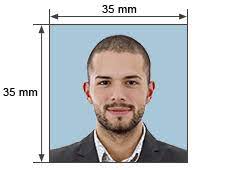Reasons and helpful tips for Indian e-Visa rejection
We want to make sure that your Indian e-Visa Application is successful and stress-free. Follow the steps outlined below to minimise the chances of rejection and apply for your Indian Visa with confidence.
To begin your Indian Visa Application Process, click here.
Requirements for Indian e-Visa or Indian Visa Online
Before we start with the reasons for rejection and tips to avoid them, it's important to understand the important requirements for an Indian e-Visa.
The important requirements for an Indian e-Visa are as follows:
- You must hold an Ordinary Passport that is valid for at least 6 months from the date of entry into India. Diplomatic or Official Passports, Refugee Passports, and Travel Documents of any other kind are not accepted.
- You'll also need a valid payment method, such as a Debit or Credit card, PayPal, or bank transfer, with a valid Email ID as proof.
- It's important to note that having a criminal history may lead to the rejection of your application.
For further information on the required Indian Visa documents, please refer to this resource.
Following are the reasons for e-Visa Rejection and Tips to Avoid them.
It is important to be aware of the common reasons for rejection when applying for an Indian e-Visa, to avoid any issues during the application process. Below are some of the most common reasons for rejection:
- Connections to Pakistan: If you have any linkages to Pakistan, such as through your parents, grandparents, or spouse, or if you were born there, your application for an Indian e-Visa will likely be rejected. In this situation, it's advisable to apply for a traditional visa through the nearest Indian embassy or consulate.
- Not providing full name: When filling out your Indian e-Visa application, it's important to provide your full name, surname, and middle name (if applicable). Using initials or omitting middle names can result in rejection.
- Passport expiring soon: To avoid rejecting your Indian e-Visa Application, make sure your passport is valid for at least 6 months at the time of entry to India.
- Incorrect e-Visa type: Be sure to select the correct type of Indian e-Visa that matches your primary reason for visiting India to avoid rejection.
- Multiple applications: Each individual is allowed only one active Indian e-Visa at a time. Applying for an Indian e-Visa while still having a valid and active e-Visa, or losing the email or printout of a previously issued e-Visa, can result in rejection.
- Not an Ordinary Passport: Keep in mind that only ordinary passports are eligible for Indian e-Visa. Diplomatic, official, and refugee passports are not accepted.
- Insufficient funds: Having enough funds to support your stay in India is crucial, as the Indian immigration authority may ask you to provide proof of your financial capability. Failing to do so could lead to the rejection of your Indian e-Visa application.
- Missing Letter from the Hospital for e-Medical Visa: A clear letter on Hospital letterhead is required from the Hospital for the treatment/procedure/surgery for the patient applying for an e-Medical Visa.
- Missing e-Business Visa requirements: Online Business Visa for India requires information (including website address) for both companies, the foreign company of the applicant and the Indian company that is being visited. Read more about India eBusiness Visa requirements.
- Information Mismatch: In addition to not providing your name exactly as mentioned in your passport, if you make a mistake in one of the passport fields on the Indian e-Visa Application, then your application can be rejected. So take special care when filling up important fields like passport number, date of birth, place of birth, country of passport etc.
- Lost old passport: You have applied for a new Visa to India, and you have lost your old passport. If you apply for an Indian e-Visa because you lost your old passport, you will be asked to provide a lost passport police report.
- Incorrect Reference from home country: Indian e-Visa application requires a Reference or contact from your country of passport or home country. This is required in case of emergency. If you are an Australian citizen living in Dubai or Singapore for the last few years and intending to visit India, you still need to provide a Reference from Australia and not Dubai or Singapore. A reference can be one of your family members or friends.
- Missing business card: Indian e-Visa application for Business requires a business card or, at the very least, an email signature showing the company name, designation, email address and phone number. Some applicants inadvertently provide a photocopy of a Visa/Mastercard debit card, which is incorrect.
- Incorrect e-Medical Visa: Make sure to apply for the correct type of Indian e-Medical Visa that matches your reason for visiting India, whether for medical treatment or to attend a medical conference.
- Blurred face photograph: Make sure to provide a clear photograph of your face with no obstructions or blurring.

Even after receiving your Indian e-Visa, but can still be denied entry.
Congratulations on receiving your India e-Visa with the Granted status! However, it's important to note that there are still some reasons why you may not be allowed to enter India. Here are some possible reasons:
- The details on your issued Indian e-Visa do not match the details on your passport.
- You don't have enough empty pages (at least 2) in your passport for stamping at the airport. Please note that stamping is not required at the Indian Consulate or Indian Embassy, only at the airport.
Make sure to double-check your passport and Indian e-Visa details before travelling to avoid any issues at the airport.
